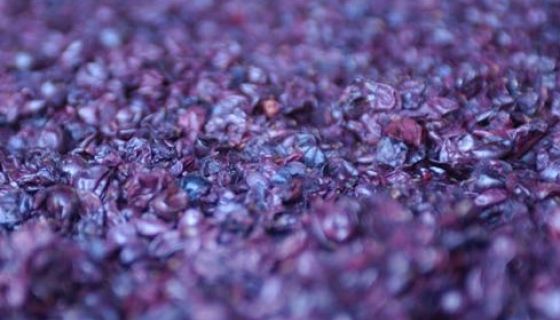18 May Tannins in red wines, the way they feel in your mouth and the way they change in the bottle, are the subject of a huge amount of research, and head-scratching, around the world. Tannins are a complex group of chemical compounds found not only in grapes but also in other fruits and tree bark. The tannins in wine derive both from grapes (proanthocyanidins, or condensed tannins), especially from the skins and seeds, but also from any oak used during vinification and maturation. Research on wine composition and its effect on how a wine tastes is made infinitely more complex because of the way wine components interact – not only with each other but also with us. You willl find far more detail in the tannins entry in your online Oxford Companion to Wine.
Tannins play an important role in what is rather inelegantly but usefully known as mouthfeel and ultimately in wine quality. They interact with the protein in our saliva to give the sensation of astringency, which is, strictly speaking, a texture not a taste. (In fact part of the functional definition of a tannin is that it is capable of interacting with protein.)
The observation that wines with higher alcohol levels seem less astringent that those with lower alcohol levels is not new but the reasons for this phenomenon had not been explained until very recently. Research led by Jacqui McRae of the AWRI (Australian Wine Research Institute), in conjunction with Queensland University, into the effect of alcohol on the interaction between wine tannins and salivary protein has shown that these interactions may be stronger at lower alcohol levels because alcohol inhibits tannins from binding with proteins in saliva.
The study, 'Ethanol concentration influences the mechanisms of wine tannin interactions with poly(L-proline) in model wine' by Jacqui M. McRae, Zyta M. Ziora, Stella Kassara, Matthew A. Cooper and Paul A. Smith is published online in the Journal of Agricultural and Food Chemistry (DOI: 10.1021/acs.jafc.5b00758). As the title indicates, they used model rather than real wine, and the tannins were extracted from two Cabernet Sauvignon wines, one three years old and one seven years old, thus also allowing the researchers to test the assertion that astringency in red wines decreases with wine age.
In McRae's summary of the research, reported in digestible form in the AWRI e-news (well worth subscribing to if you are interested in matters technical), she explains that 'Wine tannins are complex molecules that have both hydrophilic (water-loving) and hydrophobic (water-fearing) parts, both of which can stick to proteins. The recent study ... showed that tannins in lower alcohol (10%) model wines grip more tightly to salivary proteins than those in higher alcohol (15%) model wines. In higher alcohol wines the alcohol can prevent the hydrophobic parts of the tannin from sticking to proteins, leaving only the hydrophilic parts to do the heavy lifting. In low alcohol wines, both parts of the tannins can stick to proteins, enabling the tannins to bind more tightly.'
This fascinating study is far from abstract since the role of tannins in red wine in particular is hard to underestimate, with texture playing as important a role as flavour in the quality of, and pleasure derived from, many wines. And the conclusions may well have implications for the current preference for lower-alcohol wines and the number of producers jumping on the bandwagon to make them.














